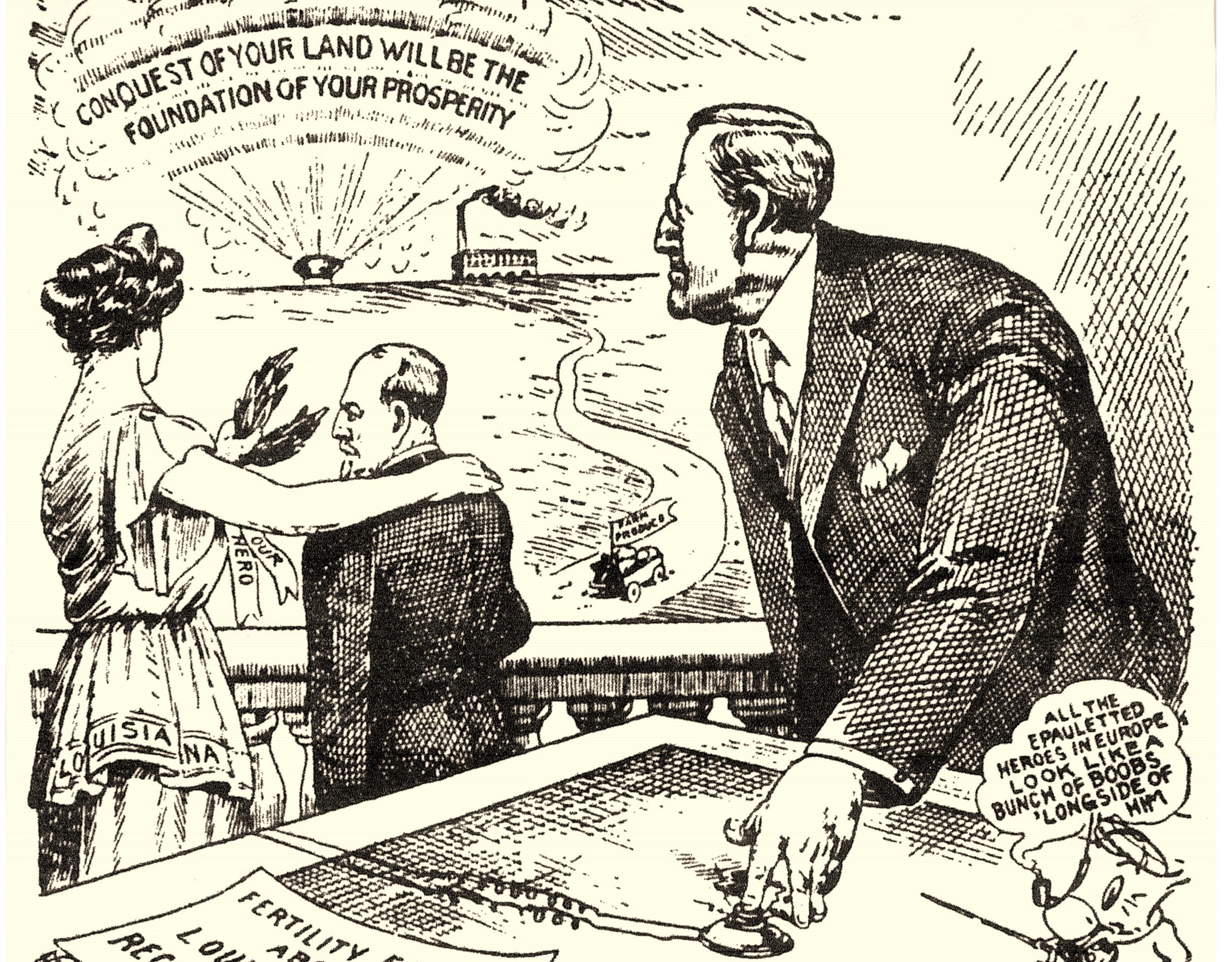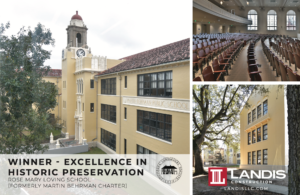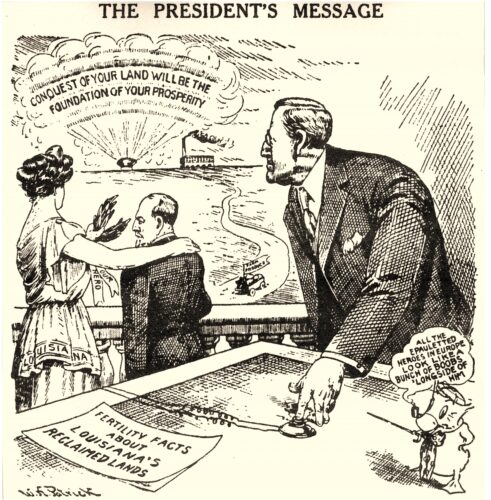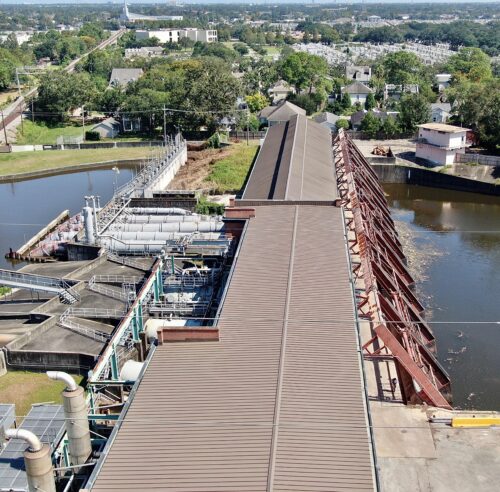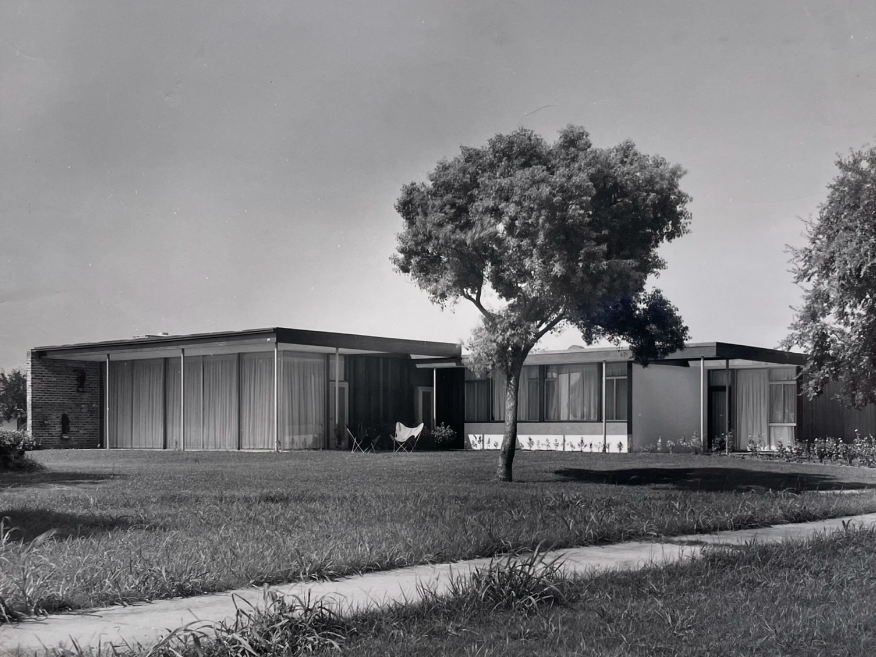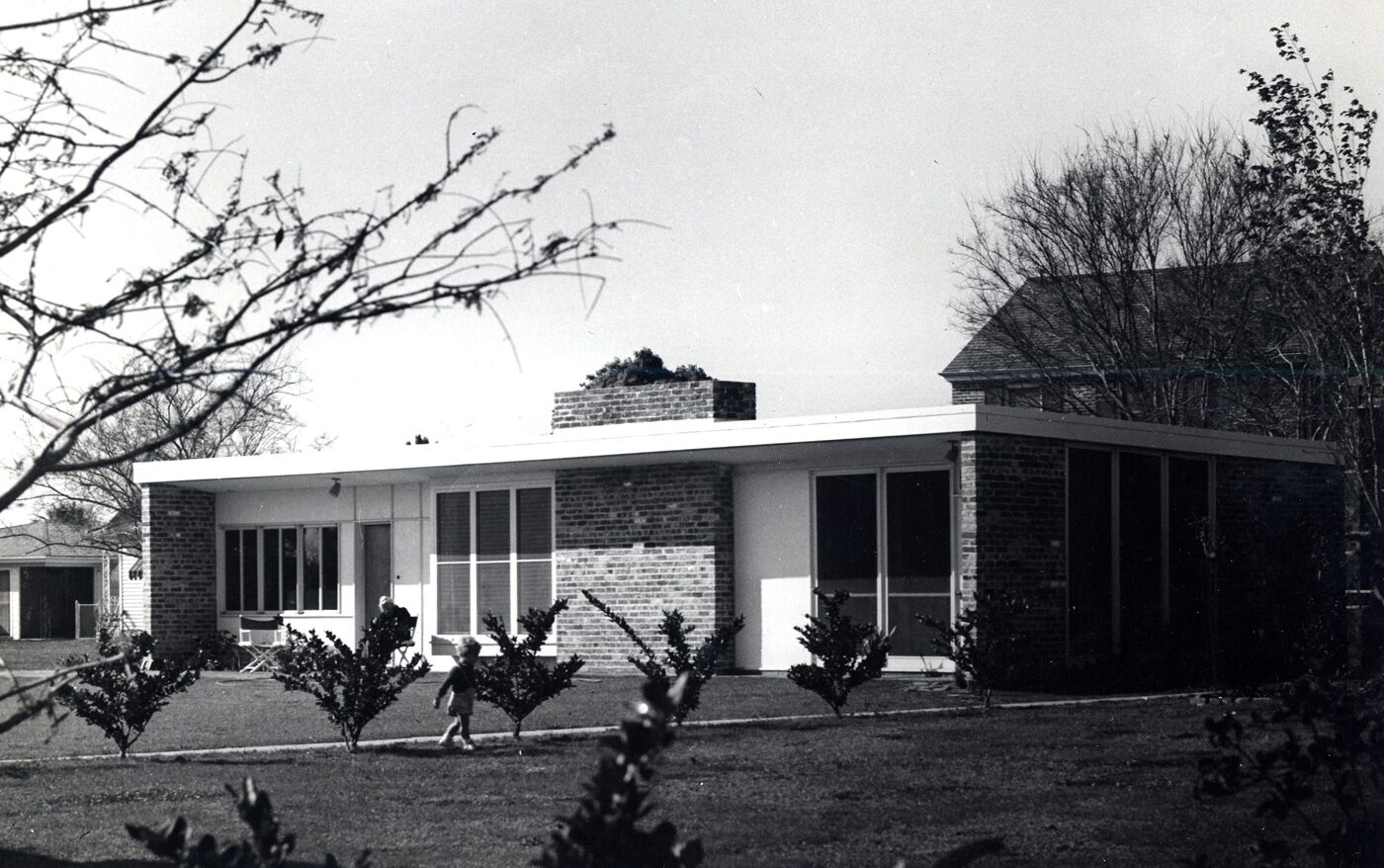The following is an edited excerpt from Richard Campanella’s latest book, “Draining New Orleans: The 300-Year Quest to Dewater the Crescent City”, published by LSU Press, which was published in our June/July 2023 issue of Preservation in Print with permission. Please see original for sources and endnotes, which have been removed from this excerpt.
On May 9, 1853, the square-rigger Northhampton arrived from Liverpool and docked along New Orleans’ Fourth District riverfront to discharge 400 passengers, mostly Irish immigrants in steerage. While cleaning the ship the next day, deckhands discovered a troubling sight: a pool of black vomit in the sick ward. One soon fell sick, by which time it had come to light that “several persons [had] died on the voyage, and [another] man, a steerage passenger, whilst coming up the river.” Another, James McGuigan, took ill upon settling into an Irish Channel boardinghouse, where his condition only worsened. He checked into Charity Hospital, and within two days, McGuigan convulsed “with black vomit” and expired. Patient One.
Two days later, on May 30, a sailor from Germany named Gerhardt Woette, infirm for five days, arrived at the same hospital. He was dead by that evening of “yellow fever with black vomit.” Patient two. In subsequent days, in similar ways, perished “a seaman born in Scotland,” a “laborer, born in England,” “a laborer, born in Ireland,” a woman “born in Germany,” and “a man named Kein,” also German. More followed, and still more.
The “stranger’s disease” had arrived at New Orleans, apparently on the Northhampton. Or had it been here all along? That fellow Kein, after all, had “worked in the swamp[,] living on Gormley’s Canal [which] drains from certain streets.” And those two siblings from the Irish Channel who caught the contagion? “The Dr. does not think these cases were caused by importation of fever from abroad, but by the locality[,] the neighborhood being wet, without drainage, containing many small tenements, crowded with destitute emigrants.” Whatever the origin, the pestilence was spreading fast — and it was not yet summer, much less “the sickly season” of August through October, when epidemics were worst.
Advertisement
So began the deadliest season New Orleans would ever see, and it stultified all aspects of urban life. Streets emptied. Vessels departed. Commerce ceased. Those with means fled — “either to the North or to the pine woods,” or to coastal retreats like Biloxi or Grand Isle. Quite literally the liveliest places in town were the cemeteries: whereas under ordinary times, the area’s 12 “cities of the dead” accepted around 500 corpses per month, in 1853 those interments numbered around 670 in May and in June, then rose to 2,132 in July and 6,198 in August — 200 per day. Lafayette Cemetery alone, located in the heart of the affluent Garden District, took in 1,177 new bodies within its one-block space in August. The citywide flow of cadavers into catacombs declined to 1,621 in September and leveled off in the mid-700s through December, still 50 percent above average, and a bellwether of subsequent scourges in 1854 (2,316 deaths) and 1855 (2,615 deaths). Most of the excess mortalities, of course, were attributable to yellow fever.
In all, of the city’s population of 154,133, fully 29,120 people contracted yellow fever during 1853, or one in five, and of them, one in four perished — at least 7,048 documented deaths (probably an undercount, in light of the cemetery data and those missed altogether). Some accounts put the toll at 10,000 or more, and as geographer Craig Colton has pointed out, “that number is made more dramatic by the fact that about half the city fled at the epidemic’s outbreak”….
If the 1840s saw the beginnings of professionalization in public health and water management, the calamity of 1853 brought about a local age of medical enlightenment. It began soon enough, in September, when conditions began to improve but danger still lurked. The Board of Health at that time had created a Sanitary Commission and staffed it with five of the city’s best doctors, putting Dr. Edward Hall Barton in charge and Mayor A.D. Crossman as chair. The board charged the commission to determine the epidemic’s origin, means of transmission, and the efficacy of quarantine in controlling it. To the question of urban conditions, the board wanted answers on “the subject of sewerage and common drains…and their influence on health,” and sought “a thorough examination into the sanitary condition of the city.”

This 1919 newspaper article from the Item was the first major local news story on soil subsidence.
In their research, Barton and his commission aimed to learn everything they could about yellow fever, surveying communities throughout Louisiana and adjacent states, plus Mexico and the Caribbean and as far away as Ecuador and Brazil. Their methods included testimonies, historical data, and geographical analyses, including maps and graphs overlaying qualitative and quantitative data through time.
The scholarship reflected Barton’s academic rigor. Born in Virginia in 1796, Barton studied medicine at the University of Pennsylvania and settled in St. Francisville in 1820, where he became involved in the Louisiana medical profession and developed a healthy skepticism of “heroic medicine,” meaning draconian treatments such as blood-letting. He moved to New Orleans in 1833 and specialized in what today would be called biostatistics, in which he integrated medical data with social, geophysical, and climatic information to tease out determinants of public health. A teetotaler in a city that was anything but, Barton once calculated that New Orleanians spent $7,449,989 annually guzzling 1,824,471 gallons of alcohol, at great cost to health and virtue. He was among the first faculty members of the Medical College of Louisiana, serving as its dean from 1836 to 1840, and joining both the Anglo-dominant Physico-Medical Society and the Creoles’ Societé Médicale. As one of the few Louisiana doctors to be a member of the American Medical Association, Barton in 1849 presented a paper on sanitary conditions in New Orleans, a topic that would dominate the rest of his life. His statistical analyses led him to courageously repudiate his own earlier public plaudits on health policy, and he became notoriously frank in contradicting those medics who whistled past the graveyard in the interest of sustaining commerce.
Advertisement
So Barton had done his homework when, at a meeting of the New Orleans Academy of Sciences, he was asked whether an epidemic might strike that summer. “Judging from the past, if the facts exhibited by the chart were not mere coincidences,” he replied, “the present year would be marked by a great augmentation of disease.” The date of that exchange was June 6, 1853, the same week of the first deaths of the Great Yellow Fever Epidemic of 1853.
That sort of fact-backed intuition is what got Barton selected to lead the Sanitary Commission, and his scientific data pervades nearly every chapter of the commission’s final report, released in 1854. While the document does allude to miasmas, evil, vice (“insalubrity and immorality have a similar paternity”), and the “hand of God” (“Providence permits no evils, without there being corresponding remedies”), Barton devoted much more of the 600 pages to documenting geophysical problems and discussing what today would be called urban water management. He even mentioned mosquitoes, four times, albeit passingly.
Barton was on to something. He had collected and analyzed massive amounts of raw data and strove mightily to connect dots and tease out relationships. He meticulously plotted annual mortality rates from 1787 to 1853, graphing a line as jagged as lion’s teeth, and underscoring each posting with corresponding water and soil conditions. 1785 Crevasses affecting the city; 1796 Canal Carondelet dug…Trenches dug around the City & Swamp Exposed…First yellow Fever; 1811 Hurricane damaging the city much; 1820 Wooden sidewalks removed; 1824-1828 Gormley’s basin and Canal prepared to drain upper & back part of the City; 1832 Extensive digging of the basin of the Bank [New Basin] Canal; 1836 Drained the rear of 2nd District; 1848 Immense excavations…for foundation of Customhouse; 1852 Cleaning out Canal Claiborne in August; 1853 Cleaning out Carondelet Canal, digging its new basin…Widening canal…Digging for Railroads…Digging in streets for water & gas…Heavy rains… Every watery disturbance flagged in the report also appeared on Barton’s high-quality Sanitary Map of the City of New Orleans, the best documentation of the drainage system of this era.
Photo 1: This newspaper cartoon heralded George Hero’s dramatic dewatering of the West Bank in 1915, following a Carnival parade in his honor and involving President Woodrow in the White House, where technicians had rigged up a switch to activate the pumps remotely. Photo 2: Pumping Station No. 6 in Lakeview raises runoff from below-sea-level stages (at right) for discharge into Lake Pontchartrain, two miles off to the left. Note the raking devices at right, designed by Albert Baldwin Wood to remove debris from the catch basin. Drone photo by Marco Rasi, with author, 2021.
The commission’s major finding, which members found to be “so unequivocal and so constant,” got italicized emphasis. “No epidemic has occurred that has not been preceded and accompanied by a great disturbance of the original soil [such as] digging and clearing out canals, basins, &…. The numerous undrained, unfilled lots and squares dotting the surface of the city, becom[e] muddy pools…for filth and garbage, [making] the numerous low, crowded and filthy tenements [into] ‘fever nests.’”
Barton and the commissioners were spot-on in associating stagnant water with yellow fever, even if they did not understand the vector was the virally infected Aedes Aegypti mosquito breeding thereupon. They were also right to recommend a campaign of urban sanitation to abate these nuisances
But we now know the commission strayed in its conflation of urban nuisances with all waters, including those naturally ponding in rural backswamp, and in overplaying the sanitation card, viewing it as a causative agent of the disease. Viewed through the lens of our modern knowledge, this is where the commission went astray. One of its culminating recommendations was “the drainage, by machines, in the rear of the city [which] should be so effectual that no water should exist within two to three feet of the surface…. The swamps…must be effectively drained…at first, thorough and complete…and that hot-bed of pestilence removed.” The commission next called for “a perfect pavement [which] should consist of materials that would neither admit of absorption nor evaporation…. The best protection that exists [is] a pavement that will neither absorb or retain water or anything else.”
As if to further mortify modern urban-water advocates, the commission also cast an accusatory eye toward forests, viewing them as passive vectors for disease. “An extensive, dense forest growth not only invites moisture, (that is, rain), but retains it. Its removal, in clearing the country, is known by experience, to dry up springs, and actually lessons precipitation…. Clearing the low country then, and thoroughly draining it, dries it, and as it has been shown, greatly tends to improve its sanitary condition, is urgently demanded here.” To be fair, the commissioners did see some value in foliage, sensing that heat played a role in yellow fever, and recommending “planting trees in the public squares and broadest streets, furnishing shade and pure air during the day, and absorbing the noxious gases during the night.” They just couldn’t see the forest for the trees.
Richard Campanella is a geographer with the Tulane School of Architecture and author of The West Bank of Greater New Orleans; Cityscapes of New Orleans; Bourbon Street: A History; and other books. Campanella may be reached through richcampanella.com, rcampane@tulane.edu, or@nolacampanella on Twitter.
Advertisements



